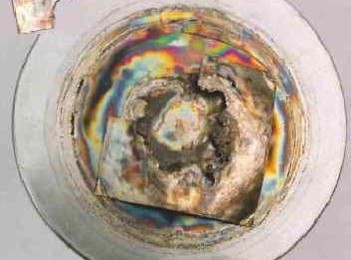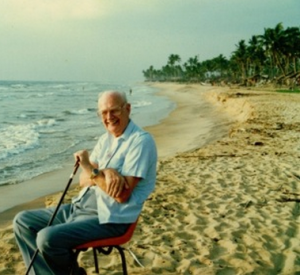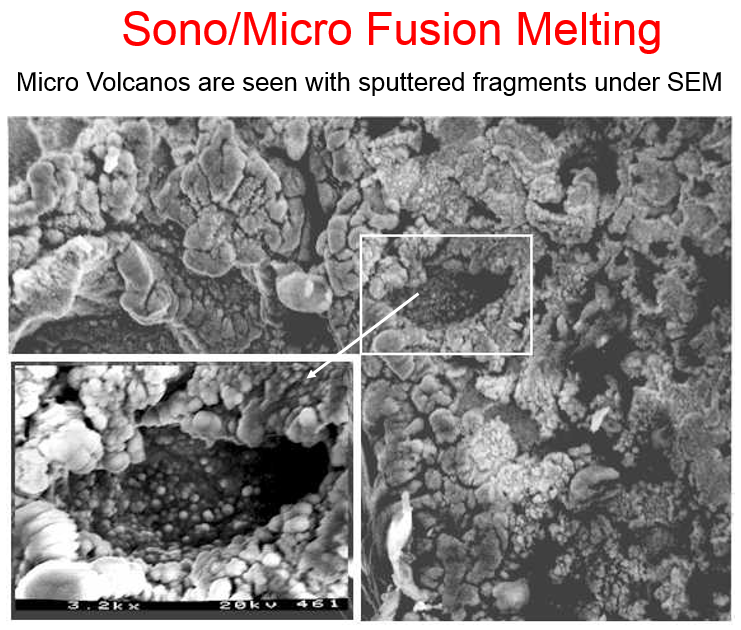
More Miracle Moments In Cold Fusion
Sometimes one is lucky enough to see more than one miracle moments in a lifetime.

Arthur C. Clarke on the beach in front of his Sri Lanka scuba diving resort where he could float and explore in inner space.
Arthur C. Clarke, rest his soul, and I used to be pen pals and kindred spirits in our fascination with science. He very nearly destroyed my marriage at one point more than 20 years ago as we corresponded frequently in letters transmitted by fax machine. He was on the other side of the planet in Sri Lanka and my fax machine was too close to my bedroom in my home.
When Art would send me one of his many page fax letters if most often arrived in the wee hours of the morning my time, late afternoon for Art. When the danged machine went off my wife would wake with a start and start jabbing me in the ribs with her elbow saying “tell that x#!!*&@!! Clarke to stop sending those damned letters at this hour….”
It was in one of those long fax letter exchanges that preceded the time of silent and timeless e-mail where Art recited to me his adage about magic and science.
“Any sufficiently advanced technology is indistinguishable from magic (or miracles).”
I loved his insight and tales of science fiction and he seemed to enjoy my tales as an explorer on the frontiers of real life science. Email arrived almost in time to save my marriage.
Here’s the story of cold (sonofusion) fusion miracle moments I was privileged to be part of.
One day in 1990, I recall, my good friend Tom Passell of EPRI called to invite me to lunch at the EPRI cafeteria as he often did. There he told me about a visit he’d had from a pair of guys one being Roger Stringham and Stringham’s partner Dick Raymond. Roger was a retired chemist from Stanford Research who had been working on cold fusion since it was announced a year earlier. His forte was sono-chemistry and he had a rig that allowed him to sonify chemical solutions. Sono-chemistry was an exotic field at the time, still is.
Tom said he was interested in what Stringham and Raymond had said to him in a meeting at EPRI but that Stringham was very elusive and Raymond was clearly a business agent or businessman wannabe. Stringham had been running pieces of palladium foils about the dimension of half a business card in his sonification rig with light water and heavy water. In heavy water the system became anomalously hot. Of the half dozen experiments run one had resulted in the palladium foil apparently melting.
I of course followed Tom’s idea that I go visit Stringham and talk about cold fusion with him which I did a few days later. Once at Stringham’s we seemed to get along as I was truly interested and willing to listen and he and his friend Dick were determined to see if they could obtain some of the millions of dollars Tom Passell administered for EPRI in the search for cold fusion.
Stringhams lab was in a basement laundry room beneath a 100 year old log cabin on the top of the Santa Cruz mountains in Woodside overlooking Stanford. On a bench the size of an office desk in one spider-web covered dusty cornor of that ancient rock walled basement was his sonification device. He had no computers or other niceties just a hand held thermocouple meter that had the capacity to switch between 2-4 thermocouples. I also learned in the first meeting that Stringham had been put on the trail of trying the sonofusion experiments by a Chinese woman colleague who’d been Stringham’s science manager when he was at working at SRI.
I being somewhat of a computer junkie immediately suggested that Stringham allow me to start using my laptop to gather data as in the hand held mode one needed to read the data from the meter and write it down in the lab notebook. At night and many other times on the multi-day duration experiments great gaps in the data resulted from no one being there to write down the time and temperature. I also suggested we start sampling the apparatus for data other than heat.
Soon I convinced him that we should find a small garage lab in Palo Alto and he agreed. We rented a place on Old Middlefield road in Mountain View on the border with Palo Alto. There we had something like 1000 sq. ft. of lab space. Once everything was moved from the black widow spider infested log cabin basement bench to our Silicon Valley garage lab where Stringham and I were able to do much more over the course of several years. We could run the sonication experiments as well as my many other cold fusion genre experiments I was interested in.
Discovery of cold fusion volcanos in metals
One of the first things I did was to take a few samples of the melted sonofusion metal target foils up to Portland State to my friend Prof. John Dash’s electron microscope lab. John and I worked in off hours one weekend to study and characterize the samples and there is where he and I first saw features in the scanning electron microscope of tiny volcano-like eruptions in the melt zones of the metals on both palladium and titanium sonofusion metal targets. The features were tiny just a few microns across and far too small to see with the cheap optical microscope Stringham and I had in our own lab.
When John Dash and I first saw those metal volcanos and the micro diameter sputtered metal beads it was surely one of those eureka moments in science that was more aptly exclaimed by our collective comment …
“WOW look at those feature what they heck is going on there.”
Prof. Dash and I were able to do some simple x-ray analysis in his SEM that was equipped for elemental analysis and we could see for certain that the tiny sputtered beads and other visibly melted materials were indeed the same palladium and titanium as the target metal. We weren’t really able to observe other elemental anomalies but there were some suggestive mysteries there.
A next step following my discovery of the sonofusion volcanos that came of Stringham’s and my work together was the fortuitous meeting via email of Prof Jean Paul Biberian of Marseille. Jean Paul was fortunately working at the US Center for Electron Microscopy Laboratory that is part of the Lawrence Berkeley National Laboratory less than an hours drive from my home in Palo Alto. I was in search of a means to do isotopic studies of the sonofusion metals and Jean Paul was working on the perfect instrument for that task the one of a kind combination instrument at the national lab that was a state of the art Scanning Electron Microscope that include within a state of the art Time Flight Mass Spectrometer.
To make a long story a bit shorter Jean Paul and I managed to get some time on the instrument and there we studied the sono metals and were able to send 1 cubic micron samples of metal from various hot and cold locations through the TOF SIMS mass spec.
WOW again… isotope ratios of the apparently melted materials were very different from the cold un-sonified corners of the sample metals. This had to be dramatic transmutation of high Z nuclei… heresy upon heresy even amongst the cold fusion science world.

Isotope shifts in palladium under sonofusion conditions… Red chart is from hot zone… green chart is from same target palladium shielded from reaction.
Here’s where my friendship with Arthur Clark again proved beneficial as he was always encouraging me to ignore the protests and proclamations of my cold fusion world colleagues that I should eschew these outlandish high Z isotopic shift observations. D + D fusing to produce 4He was a far stretch to stomach but fusion of high Z nuclei like palladium with many electrons and protons worth of Coulombic repulsion was just far too out of the box for almost all.
These days high Z isotope anomalies in cold fusion are all the rage.
Later my friend Tom Passell agreed to put some few thousand dollars of EPRI money in support of he and I running the same TOF SIMS studies of that material at the Charles Evans Lab in Menlo Park where TOF SIMS machines were built. There Tom and I found the same and even more isotope anomalies and in particular a strikingly huge anomaly in the two isotopes of tramp silver that was a contaminant in the palladium that matched up with palladium isotope anomalies.
My sonofusion work with Stringham and my independent SEM, TOF SIMS, helium and other studies of the sonofusion metals (as Stringham never wanted to acknowledge anything other than his own sonochemistry point of view in this work) led to invitations to myself and Stringham to bring our now jointly modified and improved sono-fusion reactor rig to Los Alamos and SRI.
Helium fingerprint inside cold fusion metal

SEM imaging and material science performed at Los Alamos National Lab during one of my visiting scientist residency there performing sonofusion experiments in the early 1990’s.
On one of the lengthy visiting scientist efforts at Los Alamos I was able to sit down at another electron microscope lab there to look at our sonofusion metals. There with the SEM operator who had a lot of experience in looking a nuclear materials our attention was drawn to what I was told looked like “loop punching” in cross sections of the sonofusion metal. Loop Punching I was to learn is a characteristic feature formed when helium is created inside metals by alpha decay of radioactive elements or when metals are irradiated with neutrons yield N-Alpha reactions producing helium. The helium in the metal has very limited mobility though it can move along grain boundaries and if sufficient quantity is there will dislocate a metal atom and fill the vacancy with helium expanding the vacancy like a balloon. With lots of helium the size of the ballooned vacancy is limited and helium moves along the grain boundary to make another ballooned site… a line of these ballooned vacancies is ‘loop punching.’
Meanwhile one of my other contributions to my collaboration with Stringham was my insistence that we search for helium in the sonofusion experiments. I learned from others in the cold fusion world that the US Bureau of Mines operated the national helium lab in Amarillo Texas. That lab would do analysis of any gas sample for helium for $50 as part of the national program to delineate the national reserves of helium which is associated with natural gas. I arranged to send samples of gas to Amarillo from our sonofusion experiments. The first results arrived a couple of days after Stringham and I had begun our first run of experiments at Los Alamos in Tom Claytors and Dale Tuggles lab. I phone the Amarillo lab and they reported that indeed we had helium in the sonofusion samples that was far in excess of the 5.22 ppm helium found in air. Over time my repeated study of sonofusion experiments and samples in five other major laboratories confirmed our production of both 4He and in inexplicable large amounts both in off gases and inside metals of our experiments.
After some years of working together my relationship with Stringham soured. sizing We were both wearing out on the years of work under the dark clouds of criticism the field suffered from. He secretly worked with a patent attorney and filed patent claims that did neither acknowledge my years of work side by side and major improvements to both the sonofusion hardware, experimental protocols, or the illuminating efforts that came from support for our work by numerous national laboratory groups and EPRI. Stringham’s original business partner Dick proved to be a passive aggressive scamp and together they were certain that they could be sole beneficiaries of the potential our sonofusion collaboration had developed following the handful of experiments on the basement bench of that log cabin in the woods.
Stringham has since proclaimed that almost all of the work we did together he was solely responsible for which is of course proven false in countless documents and via presentations of our joint efforts at scientific conferences.
This is a sad fact of life in the field of cold fusion like most pioneering science as Arthur Clarke once wrote to me, ” pioneers in science always count more arrows in their back than it their fronts.”
The photo that is the banner for this post is one I took of a piece of palladium foil, half the size of a business card, burned and melted while being sonicated in heavy water. Ordinary light water never produced any such heat effects.
